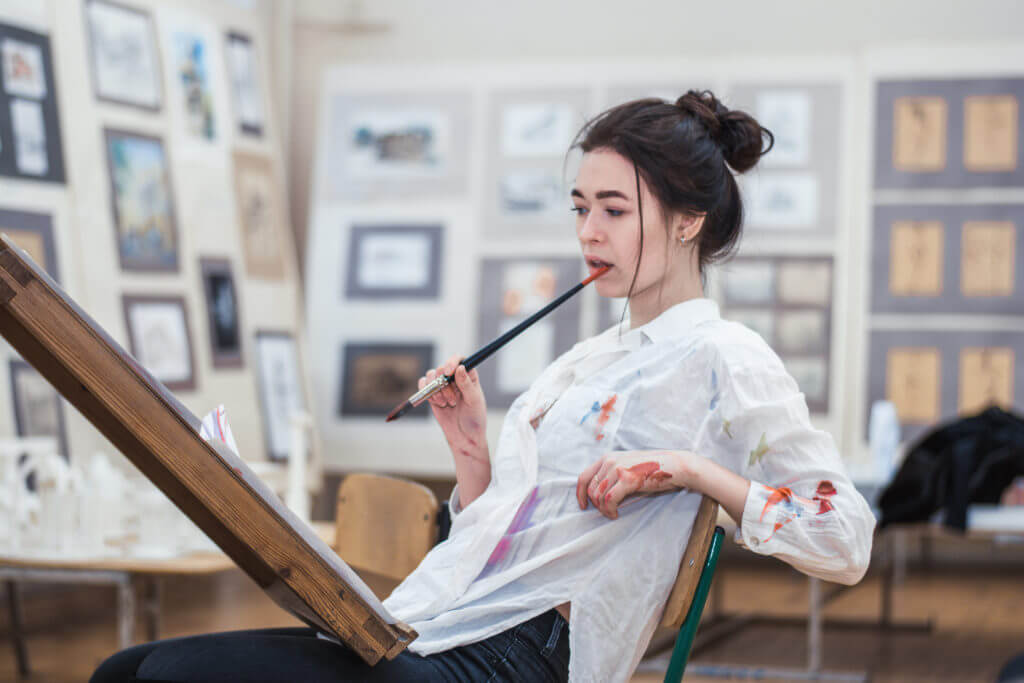If you’re an accomplished artist or are becoming well-known in your art community it’s quite likely that at some point you’ll be asked to conduct a demonstration or workshops based on a style or technique that is unique to you.
Some people are natural instructors and presenters, and won’t have a problem with saying “yes” and doing a fantastic job. But many artists are just that—artists, not teachers—and won’t know how to create a session that is enlightening, instructive and, perhaps, entertaining.
Not to mention that if there is any form of payment involved, there will also be expectations of you and the last thing you want is to disappoint.
So where do you begin? At the beginning, of course!
Step 1. List out your Intended Learning Outcomes
Start with a plan of what you hope to achieve based on your audiences’ expectations and your ability to fulfill them. I do this by listing out my Intended Learning Outcomes (ILOs for short).
The goal is to focus on what your audience should be able to do, know, and value by the end of your session.
If you are using a slide show, these IOLs should be stated at the beginning and reviewed at the end. You can also provide this information if you use handouts or write them on a board. It is important for your audience to know the goal of the workshop, and will help keep you on track.
ILOs must always contain a verb (as highlighted below in bold). Try not to make them too vague, since some detail is important so your audience will know if they’ve achieved the correct outcome. And make them attainable: in other words, something they can do in the specified period of time (2 hours or 2 days).
Here’s an example. . .
By the end of this session:
1.You will appreciate the importance of establishing a horizon line when painting landscapes.
2.You will understand the difference between hue, tint, tone and shade
3.You will complete an underpainting using fluid mediums.
4.You will complete a painting using only primary colours.
Step 2. List out your Instructional Goals
Your Instructional Goals (or IGs) should focus on what you will do as an instructor or presenter. It’s basically a step-by-step outline of the actions you’ll take to achieve your stated ILOs.
NOTE: If you have been asked to conduct a workshop, it is entirely appropriate to show examples of your work and explain how you achieved your outcome, but it isn’t appropriate to spend most of the session looking at slides instead of creating art.
You should plan your sessions minute by minute, allowing time for questions and a few anecdotes (unless you have been asked to present your work without instruction). Even then, it is always more interesting to hear about your process than simply look at pictures.
“Why did you switch from oil to acrylic?”
“What is your favorite paper?”
“How did you get gallery representation?”
These are all the types of things artists will be interested in, so plan on addressing them. You should also make sure to allow time for personal instruction and a review of the ILOs at the end.
Here’s an example of what your schedule might look like:
1:00 – 1:15
Intro Bio, CV and slideshow of work, discuss learning outcomes and explain the plan and timing
1:15 – 1:30
Group discussion: who has experience painting landscapes, who paints plein air—expectations, problem areas, questions
1:30 – 1:45
Explanation of equipment, mediums, select reference photos, set up work stations
1:45 – 2:00
Coffee Break
2:00 – 2:15
Demonstrate how to start, mediums, substrates, options
2:15 – 4:30
Painting, individual instruction
4:30 – 5:00
Show and tell completed work, review of ILOs, questions, wrap-up, distribute business cards
Although this may seem like a lot of work to plan and set up, the success of your workshop or demonstration depends upon your readiness—and it will be incredibly helpful on the day of the event.
And, if you are successful, your reputation will precede you and you may expect return invitations as well.
Special thanks to Ingrid Mueller for sharing this post! To learn more about her or her art, please visit her website
This post may contain affiliate links.

